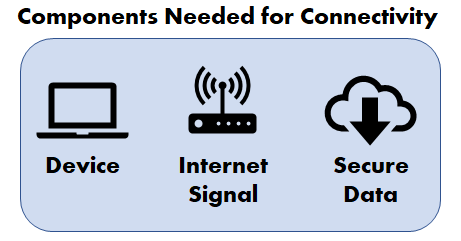Last month, Funds For Learning published a whitepaper. The premise was a straightforward question: what would it take to have all families in the United States connected to the Internet next school year? We prepared a data-driven analysis and developed a practical solution to help meet the need. It included devices, Internet access and cybersecurity to keep networks up and running.
Joining with other groups, we drafted legislation… and then we heard that support for cybersecurity was frowned upon and we would be better off removing it. In good conscience, we cannot do that; therefore, we are asking for your help. Please let Congress know that cybersecurity is an important part of connecting students and library patrons to your network.
Joining with other groups, we drafted legislation… and then we heard that support for cybersecurity was frowned upon and we would be better off removing it. In good conscience, we cannot do that; therefore, we are asking for your help. Please let Congress know that cybersecurity is an important part of connecting students and library patrons to your network.
###
We estimate that at least 7.15 million family households cannot afford Internet access. Before next fall, schools and libraries need to prepare in the event individuals, or entire communities, once again need to quarantine because of COVID-19.
We ran the numbers and projected that $7.5 billion would be required to take a serious swing at tackling this challenge. Our analysis considered three key elements: a device, an Internet connection, and a secure network. Access to each of these plays a critical role in connecting students and library patrons. Lose any one of them and connectivity is lost. The system is only as good as its weakest link.

Recognizing that resources would be needed quickly, it seemed sensible to leverage the existing structure of the federal E-rate funding program. The current forms and online tools would provide effective support, where it is needed the most, in a timely manner, with flexibility for local decision making, while providing transparency and strong accountability. Using the program’s discount structure encourages applicants to use the money wisely, and we estimate that Congress would need to allocate $5.25 billion in one-time emergency funds to help.
So far, so good.
Others saw our report and soon the SHLB organization and SECA, the State E-rate Coordinators’ Alliance, joined us in drafting legislation that would get the ball rolling. In the span of just a few days, almost two thousand signatures were collected in support of this legislation, which you can review here.
Then something strange happened.
We heard that cybersecurity is frowned upon and that legislation that includes it is unlikely to succeed. How can this be? One cyber-attack can take a school district down for weeks. Remote learning and online classrooms go dark when the network is down. Don’t believe it? Here are just a few headlines:
- CoSN: EdTech Leaders Cite Cybersecurity as No. 1 Priority (link)
- Cyber-Attacks Up 37% Over Past Month as #COVID19 Bites (link)
- Recent school ransomware attacks highlight need for ongoing vigilance (link)
- Over 1,000 US Schools Hit by Ransomware in 2019 (link)
Why would there be opposition to cybersecurity? Keep in mind that the proposed funding could be used for whatever purposes a local school or library leader deems essential. There is no requirement that they request funding for cybersecurity. They could choose to request discounts for devices, such as Chromebooks; for Internet connections, such as Wi-Fi hotpots; or for nothing at all. The funding would be optional and would be tied to their community’s specific needs and expenditures. Funds simply would be available for devices, connections and/or cybersecurity.
Why would we not want to give schools and libraries the option to secure their computer networks? Why would we make billions of dollars available for devices yet determine not to protect those devices and networks from attack? A cyber-attack can render all devices and an entire community or state network unusable. It is unconscionable that there is opposition to securing access to online educational resources, yet that position is held by some in Washington, DC.
###
Keeping our communities connected is vitally important; and schools and libraries play a central role in the process. Here is what you can do to help. If you support Internet access for students and library patrons, and believe that having secure networks is important, please do the following:
- Share this article via social media channels.
- Put trade associations and groups on the spot. Ask them if they think cybersecurity is a concern or not, and whether it should be included in emergency funding for Internet access. You might be surprised by the answer you receive — or, more likely, by their unwillingness to answer the question.
- Contact your state officials and Congressional delegation. Tell them you support proposed legislation for devices, Internet and secure networks for students and library patrons.
By making our voices heard, we can positively impact millions of lives.
